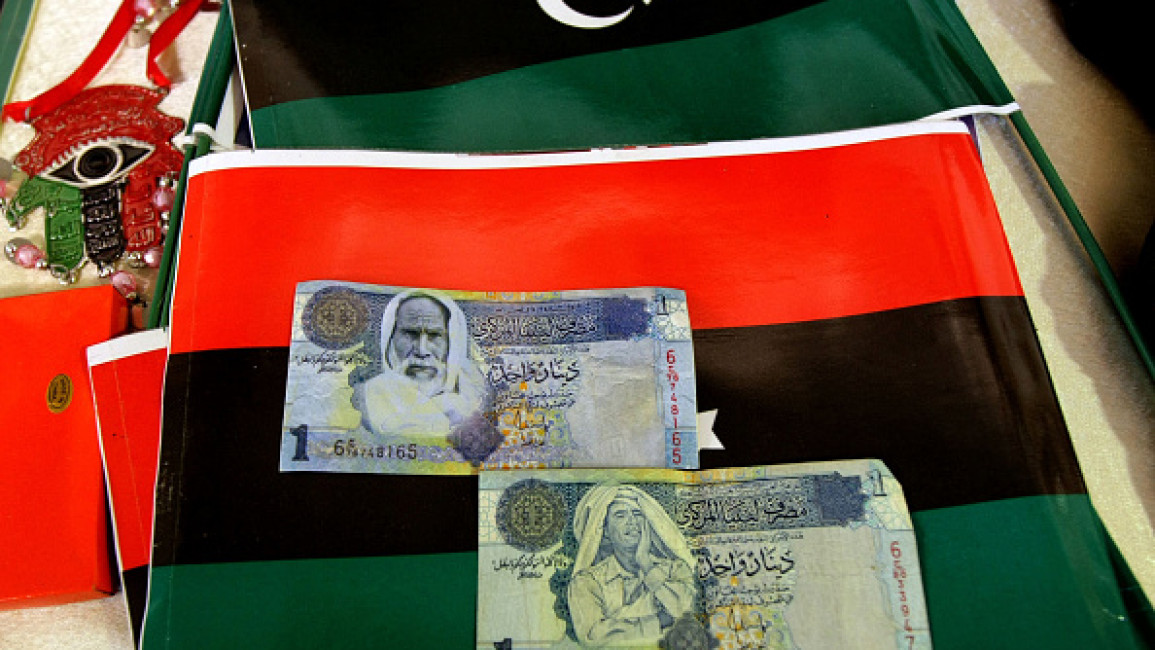
East Libyan criminal banknotes, including ones manufactured in Russia, attacked the dinar
According to three people acquainted with the situation who spoke to Reuters, unofficial Libyan banknotes have been traded for actual dollars and have contributed to the dinar’s depreciation. Some of the notes were created illegally in Libya this year, while others were printed by Russia and shipped to the country’s east.
According to sources in Libya’s eastern administration, Libyan banking sources, and diplomatic sources, the new banknotes are being converted into hard cash on the black market or through local banks, despite the Central Bank of Libya (CBL) in Tripoli classifying them as counterfeit.
According to the eastern government source and the banking source, the funds have been utilized to finance infrastructure projects in the east after the disastrous floods that occurred there last year. According to the diplomatic source, the funds might also be utilized to support Russian mercenary operations in Libya and the Sahel.
Reuters was notified by The Sentry, an international investigative and policy group that focuses on war crimes and corruption, about Russia’s involvement in the influx of new banknotes into Libya.
Requests for comment from Reuters were not answered by the Central Bank of Libya, which is headquartered in Tripoli, nor by its branch in Benghazi. The Libyan National Army, which controls all of eastern Libya, did not immediately respond to a request for comment from Reuters.
A written request for comment from Goznak, the state money printer of Russia, was not answered.
2014 saw the division of Libya between rival eastern and western forces. New outbreaks of violence are always on the horizon, and despite efforts to legally reunite institutions and a ceasefire in 2020, a political solution has been difficult.
Goznak was sanctioned by the U.S. State Department in June for printing more than $1 billion in fake Libyan money, however the department did not specify where or when the notes were produced or delivered.
From 2016 until a truce in 2020, Russia provided billions of dinars to eastern authorities, supporting the government in Benghazi and the allied eastern commander Khalifa Haftar. It was previously unknown that it would be issuing new banknotes this year.
Ali al-Hibri, the governor of CBL’s eastern branch in Benghazi, signed the dinars that were officially minted between 2016 and 20. Their issuance, coupled with disparate exchange rates around the nation, exacerbated economic divisions inside Libya.
The major CBL branch in Tripoli, run by Governor Sadiq al-Kabir, acknowledged the Russian-printed notes issued by Hibri as legal tender following the ceasefire and efforts to reunite the banking system.
“SEVERE RISK” TO THE BANKING SYSTEM
In 2022, Hibri was replaced. Kabir went on to say that the new notes shouldn’t be utilized, but eastern Libyan authorities have stressed that any institutions that refuse to use them will face consequences.
U.N. experts claim that Haftar effectively controls eastern Libya, home of the national parliament, and that he used Russian mercenaries from the Wagner group during the battle in 2019–20. The US military has stated that the Russian fighters are still in place.
Charles Cater, chief of investigations at The Sentry, stated that “the country’s entire banking system is seriously threatened by the Haftar family’s hegemonic control over eastern Libya.”
The majority of the black market money is in 50-dinar notes. Four types of 50-dinar notes were identified by the CBL earlier this year in a statement: the ones printed by the central bank, the ones printed by Goznak for the eastern CBL branch under Hibri in the past, and two recent issuances that the CBL labeled as counterfeit.
One of the issues, according to the diplomatic source, was printed in Russia and imported, and it was of a higher caliber. The informant claimed that the other, less sophisticated notes seemed to have been printed domestically in Libya.
Both the eastern government source and the Libyan banking source reported that an illegal dinar printing operation was operating in eastern Libya.
According to three people familiar with the situation who spoke to Reuters, dinars are either changed to hard currency through money changers on the illicit market or through deposits made in eastern banks by shell companies that utilize import letters of credit to transfer US dollars from the central bank to foreign businesses.
“The ‘exporter’ is actually a front firm run by the same people who are in charge of the banknote printing business. The criminal network keeps the money and ships no goods,” Cater claimed.
In the past, the CBL temporarily ceased issuing letters of credit due to claims made by certain importers that they were being used to obtain dollars at a discount.
The CBL declared in April that it would remove all 50-dinar notes from circulation by the end of August in an effort to lessen the impact of counterfeit notes.
The decline in Libya’s dinar started last year but picked up speed in early 2024, a decline that both financial and diplomatic sources attributed to the influx of fresh notes from the east.
According to the diplomatic source, it is “a major concern” that the Russians are printing dinars that will eventually be used to pay off debts related to Wagner or the Africa Corps, the Russian military presence in Africa that has taken over for Wagner group since the founder, Yevgeny Prigozhin, passed away in 2023. This will negatively impact the value of the dinar.
All Categories
Recent Posts
Tags
+13162306000
zoneyetu@yahoo.com



